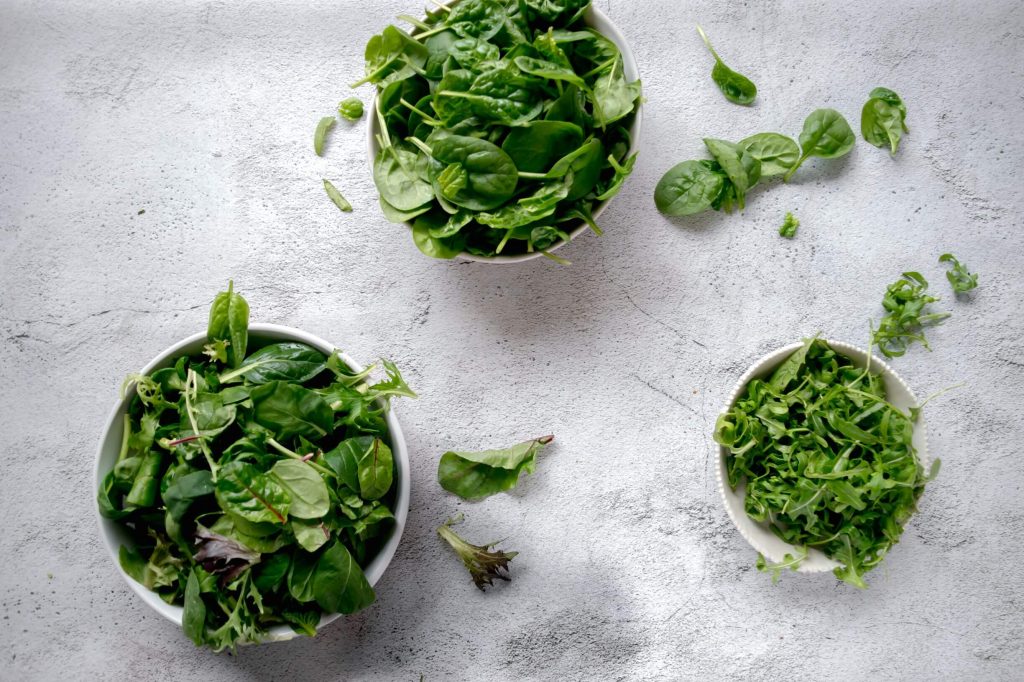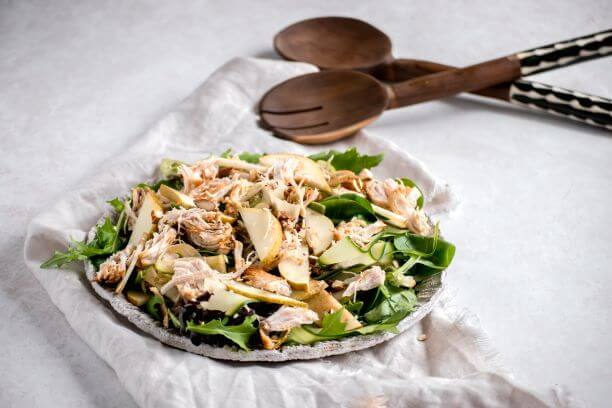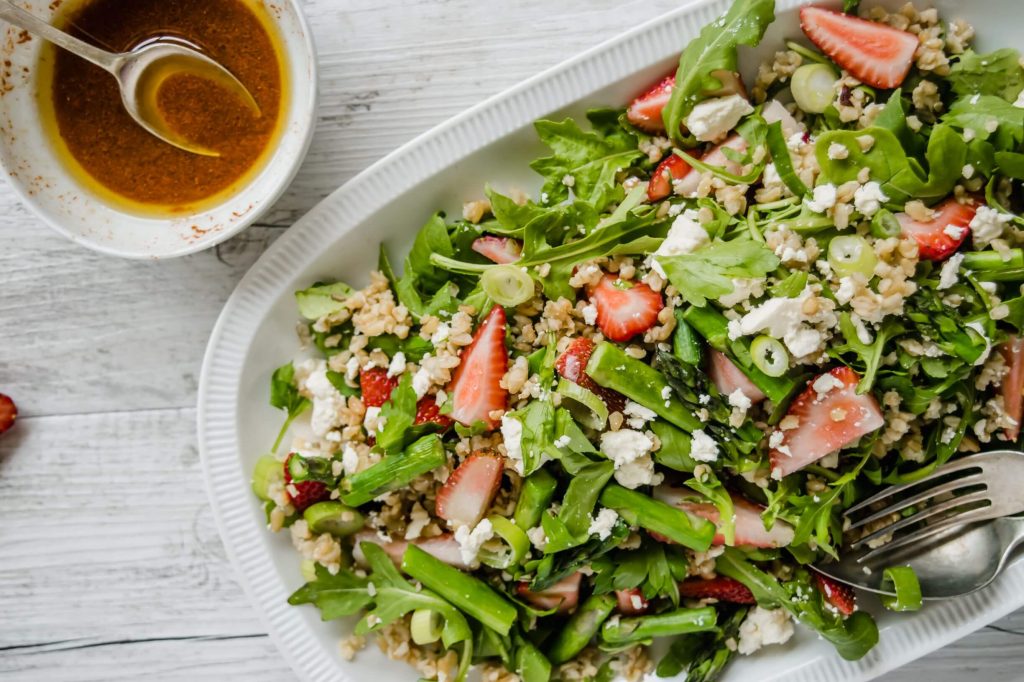Salads are great for us! But eating a big bowl of the same thing everyday can get boring very quickly, and let’s face it… salad for lunch can often leave you feeling hungry. But that doesn’t have to be the case. Salads can be a super delicious, interesting and, most importantly, filling lunch so you aren’t reaching for the snacks an hour later.
Follow these steps to build your salad for a nutritious and light (but still filling) lunch option.
1. Leafy Greens
The base of any good salad is leafy greens. Choose 1 cup of your favourite salad greens – spinach, kale, rocket or a vibrant salad leaf mix! The benefits of leafy greens are phenomenal, read about them here. Just a cup of leafy greens is considered one serve of vegetables, so you will already be well on your way to reaching your five a day.
Examples: Spinach, rocket, mixed greens, kale, green or red cabbage.

2. Grains
Grains are the key to keeping you full. Not only do they provide us with essential carbohydrates that our body needs for fuel, they are also packed with fibre to improve digestion and help keep you fuller for longer. Add ½ cup of your favourite wholegrain to your salad.
Examples: Brown rice, quinoa, freekah, cracked wheat, pearl couscous, wholemeal pasta.
3. Vegetables
This is where you can load in the nutrients without loading up on the calories. Choose vegetables of a range of different colours to make sure you are getting the vitamins and minerals your body needs. To make it even more filling add in a little roast pumpkin or sweet potato, otherwise stick to lighter vegetables that don’t need to be cooked!
Examples: Roast pumpkin, sweet potato, beetroot, cucumber, tomato, capsicum, red onion, grated carrot, peas, corn, snows peas, green beans.

4. Protein
It’s really important to include a good source of protein in every meal you have throughout the day. Not only is protein a low source of calories, it also helps you to stay fuller for longer. For a healthy lunch choose a portion of protein that is easy to digest (white meats and fish), so that it doesn’t slow you down – for this reason, red meat isn’t always the best option! For vegetarian and vegan options think all things legumes.
Examples: Chicken breast, tinned tuna, grilled salmon, chickpeas, French lentils, cannellini beans, boiled eggs, grilled tofu.
5. Dairy
It might sound weird to add a source of dairy to your salad, but cheese is a super tasty addition salad addition. One of the healthiest cheeses you can add to your salad is cottage cheese. It adds a delicious salty flavour as well boosting the protein and of course calcium for strong bones!
Examples: Cottage cheese, feta, haloumi, goats’ cheese, cheddar cheese.

6. Nuts and Seeds
Nuts and seeds are another way to add protein to your salad, while also providing a delicious crunch! Nuts and seeds are high in minerals and healthy fats to meet your nutritional needs and keep you full for longer.
Examples: Almonds, pine nuts, sesame seeds, pumpkin seeds, cashews, sunflower seeds, flax seeds, walnuts.
7. Dressing
Dressing can either make or break your salad. Keep the flavours simple and you are sure to be onto a winner. The best base for dressings is olive oil, as it’s full of healthy fats. Store the dressing in a separate container and dress the salad just before you eat. This means your salads can last in an airtight container for up to four days without going soggy, so meal prep is super easy.
Examples: Olive oil + balsamic vinegar, light Italian dressing, maple mustard dressing, lemon juice + olive oil, tahini dressing, lime and chilli dressing.
For even more salad inspo, check out some of our favorite salad recipes here!
